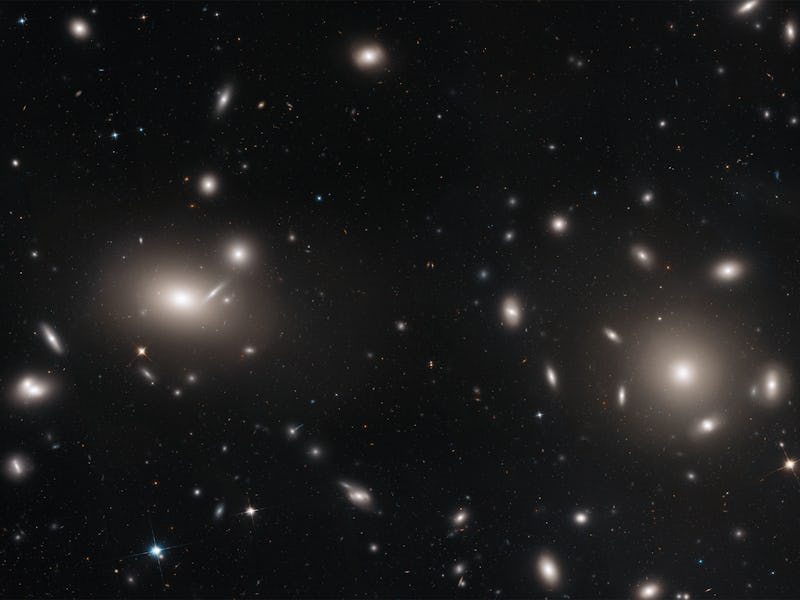Star cluster discovery stumps astronomers
Lurking in the Andromeda galaxy, a group of stars call into question fundamental ideas about how these stellar bodies form.

In the early universe, old stars hung out in groups.
Globular clusters are made up of hundreds of thousands of ancient stars, tightly packed together in the shape of a sphere and orbiting the core of a galaxy.
While surveying globular clusters in the nearby Andromeda galaxy in October 2019, a group of astronomers stumbled upon a cluster that just didn't seem quite right.
This strange asterism of stars was shockingly low on heavy metals, the very stuff that fuels star formation.
The discovery is detailed in a study published Thursday in the journal Science.
Søren Larsen, an associate professor at Radboud University and lead author of the new study, has studied the composition of globular clusters for years, seeking clues to how galaxies form and evolve over time.
In October of last year, Larsen and his team were waiting on data from a different study target. To pass the time, they decided to randomly pick a different cluster to observe. Their boredom soon turned to disbelief.
"It was quite surprising," Larsen tells Inverse. "We had to check a few times to make sure that it’s right."
The globular cluster Larsen and his colleagues picked is known as RBC EXT8 and it is located in the Andromeda galaxy. Andromeda is the closest galaxy to our own Milky Way, located just 2.5 million lightyears away. This may seem far, but Andromeda is a very close cosmic neighbor — so close, that one day the galaxies will collide.
The scientists discovered that the cluster in question had some 800 times less heavy metal content than the Sun. Together it, is three times lower in metal than the previous 'lowest metallicity' record holder globular cluster. The discovery calls into question how much of these heavy metals are needed to create stars.
For context, heavy metals are chemical elements that have a relatively high density, and considered heavier than hydrogen and helium. These heavy metals were thought to be essential to fuel star formation, especially at the high rates needed to create a globular cluster. But these results suggest otherwise.
"Our finding shows that massive globular clusters could form in the early Universe out of gas that had only received a small ‘sprinkling’ of elements other than hydrogen and helium," Larsen says. "We have to try to understand how we can form these massive star clusters with very small amounts of heavy elements."
Essentially, the data challenge what astronomers thought they knew about massive groups of stars — which indicates scientists are missing something in their theories of how the stars formed. Now, the team are on the hunt for other clusters that may display similar properties.
"We know that there's at least one," Larsen says. "Now we would like to find more and we can be a little bit more systematic about it."
Scientists look to star formation in order to get a better understanding of how galaxies form. One theory suggests that galaxies start off as small clouds of stars and dust that merge with other clouds over time, eventually creating a galaxy like the Milky Way.
"I think there's still quite a lot we don't know about how galaxies build up or when they first started to form their first stars," Larsen says. "There are still many details to fill in."
Abstract: Globular clusters (GCs) are dense, gravitationally bound systems of thousands to millions of stars. They are preferentially associated with the oldest components of galaxies, and measurements of their composition can therefore provide insight into the build-up of the chemical elements in galaxies in the early Universe. We report a massive GC in the Andromeda Galaxy (M31) that is extremely depleted in heavy elements. Its iron abundance is about 800 times lower than that of the Sun, and about three times lower than in the most ironpoor GCs previously known. It is also strongly depleted in magnesium. These measurements challenge the notion of a metallicity floor for GCs and theoretical expectations that massive GCs could not have formed at such low metallicities.